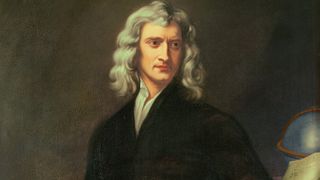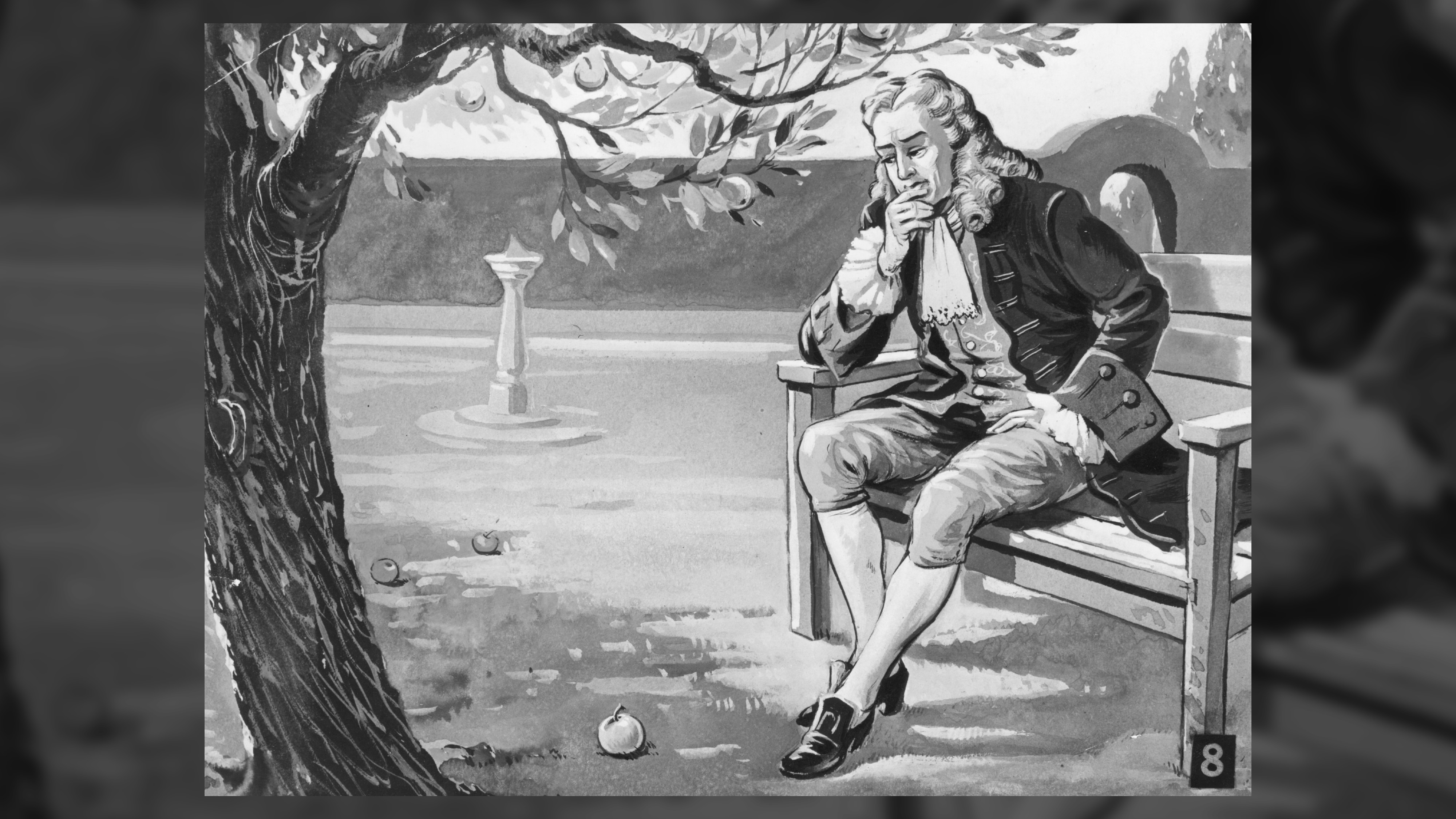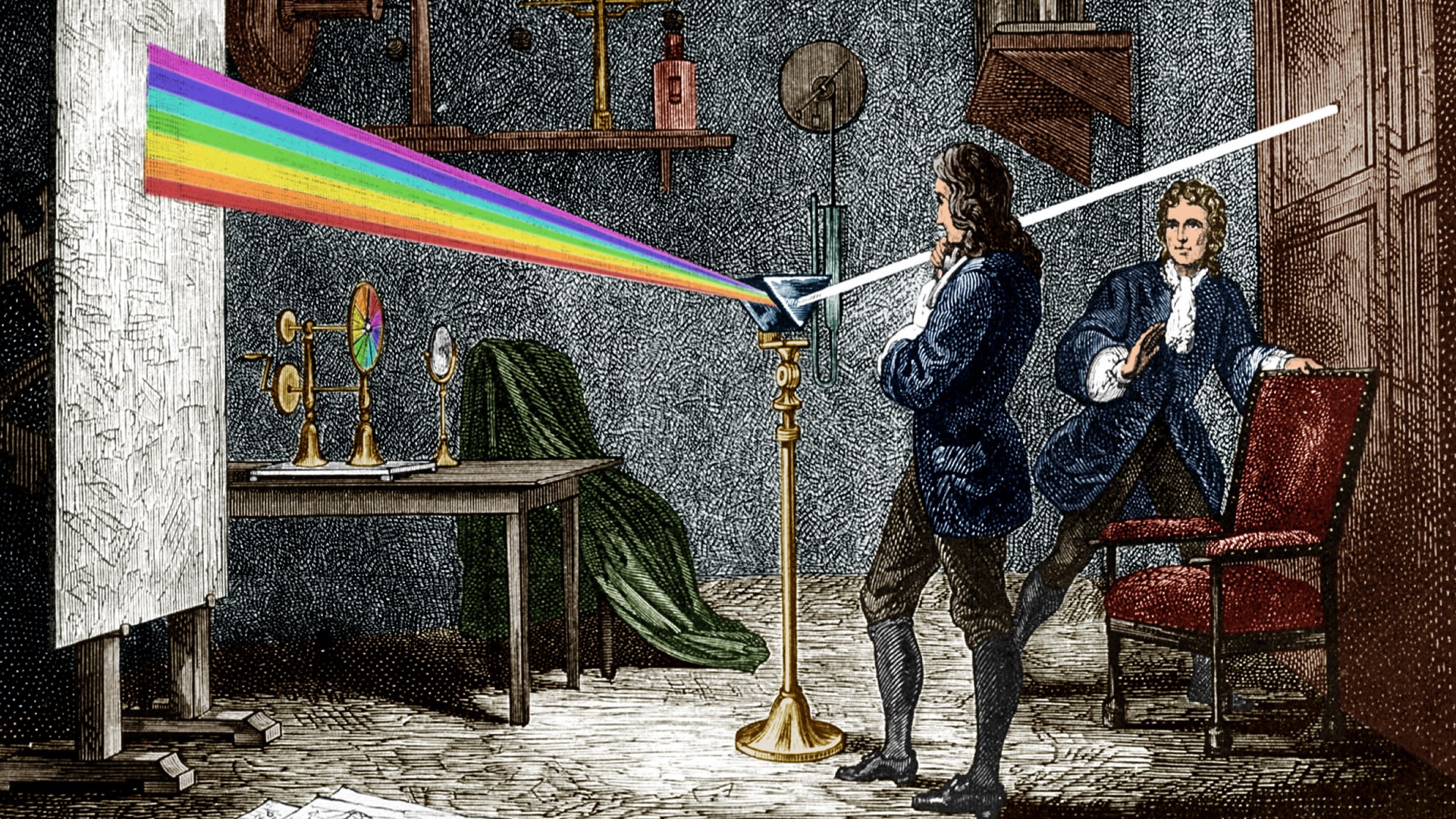Who Did Isaac Newton Work With to Continue Studying Gravity
Sir Isaac Newton: Quotes, facts & biography

Sir Isaac Newton contributed significantly to the field of science over his lifetime. He invented calculus (opens in new tab) and provided a clear understanding of optics. But his most significant work had to do with forces, and specifically with the development of a universal law of gravitation and his laws of motion.
Isaac Newton's early life
Born to a poor farming family in Woolsthorpe, England, in 1642, Isaac Newton arrived in the world only a few months after his father had died. "The boy expected to live managing the farm in the place of the father he had never known," wrote James Gleick in "Isaac Newton (opens in new tab)" (Vintage, 2004). However, when it became clear a farming life was not for him, Newton attended Trinity College in Cambridge, England. "He did not know what he wanted to be or do, but it was not tend sheep or follow the plough and the dung cart," wrote Gleick. While there, he took interest in mathematics (opens in new tab), optics, physics, and astronomy. After his graduation, he began to teach at the college, and was appointed as the second Lucasian Chair there. Today, the chair is considered the most renowned academic chair in the world, held by the likes of Charles Babbage and Stephen Hawking.
In 1689, Newton was elected as a member of parliament for the university. In 1703, he was elected as president of the Royal Society, a fellowship of scientists that still exists today. He was knighted by Queen Anne in 1705. He never married.
Newton died in 1727, at the age of 84. After his death, his body was moved to a more prominent place in Westminster Abbey. During the exhumation, large amounts of mercury (opens in new tab) were found in the scientist's system, likely due to his work with alchemy, which appear to have had a detrimental affect on his health.
"In 1693 Newton suffered from insomnia and poor digestion; and he also wrote irrational letters to friends. Although most scholars have attributed Newton's breakdown to psychological factors, it is possible that mercury poisoning may have been the principal cause," wrote L. W. Johnson and M. L. Wolbarsht, members of Newton's own Royal Society, in "Mercury Poisoning: A probable cause of Isaac Newton's physical and mental ills: Notes and Records of the Royal Society of London Vol. 34. No. 1. (opens in new tab)" in 1979.
Isaac Newton's laws of motion
Newton's most famous work came with the publication of his "Philosophiae Naturalis Principia Mathematica" ("Mathematical Principles of Natural Philosophy"), generally called Principia. In it, he determined the three laws of motion for the universe.
The first describes how objects move at the same velocity unless an outside force acts upon it. (A force is something that causes or changes motion.) Thus, an object sitting on a table remains on the table until a force – the push of a hand, or gravity – acts upon it. Similarly, an object travels at the same speed unless it interacts with another force, such as friction.
His second law of motion provided a calculation for how forces interact. The force acting on an object is equal to the object's mass times the acceleration it undergoes.
Newton's third law states that for every action in nature, there is an equal and opposite reaction. If one body applies a force on a second, then the second body exerts a force of the same strength on the first, in the opposite direction.
From all of this, Newton calculated the universal law of gravitation. He found that as two bodies move farther away from one another, the gravitational attraction between them decreases by the inverse of the square of the distance. Thus, if the objects are twice as far apart, the gravitational force is only a fourth as strong; if they are three times as far apart, it is only a ninth of its previous power.
These laws helped scientists understand more about the motions of planets in the solar system, and of the moon around Earth.
Related: What are Newton's laws of motion?

Isaac Newton and the apple tree
A popular myth tells of an apple falling from a tree in Newton's garden, which brought Newton to an understanding of forces, particularly gravity. Whether the incident actually happened is unknown, but historians doubt the event — if it occurred — was the driving force in Newton's thought process.
The myth tells of Isaac Newton having returned to his family farm in Woolsthorpe, escaping Cambridge for a short time as it was dealing with a plague outbreak. As he sat in the farm's orchard, an apple fell from one of the trees (in some tellings it hit Newton on the head). Watching this happen, Newton began to consider the forces that meant the apple always fell directly towards the ground, beginning his examination of gravity.
One of the reasons that this story gained a foothold in popular understanding is that it is an anecdote Newton himself seems to have shared. "Toward the end of his life, Newton told the apple anecdote around four times, although it only became well known in the nineteenth century," wrote Patricia Fara, a historian of science at the University of Cambridge, in a chapter of "Newton's Apple and Other Myths about Science (opens in new tab)" (Harvard University Press, 2020).
However, it would be at least 20 years before Newton published his theories on gravity. It seems more likely that Newton used the story as a means of connecting the concept of gravity's impact on objects on Earth with its impact on objects in space for his contemporary audience.
Isaac Newton's inventions and discoveries
While a student, Newton was forced to take a two year hiatus when plague closed Trinity college. At home, he continued to work with optics, using a prism to separate white light, and became the first person to argue that white light was a mixture of many types of rays, rather than a single entity. He continued working with light and color over the next few years, and published his findings in "Opticks" in 1704.
Disturbed by the problems with telescopes at the time, he invented the reflecting telescope, grinding the mirror and building the tube himself. Relying on a mirror rather than lenses, the telescope presented a sharper image than refracting telescopes at the time. Modern techniques have reduced the problems caused by lenses, but large telescopes such as the James Webb Space Telescope use mirrors.
As a student, Newton studied the most advanced mathematical texts of his time. While on hiatus, he continued to study mathematics, laying the ground for differential and integral calculus. He united many techniques that had previously been considered separately, such as finding areas, tangents, and the lengths of curves. He wrote De Methodis Serierum et Fluxionum in 1671, but was unable to find a publisher.
Newton also established a cohesive scientific method, to be used across disciplines. Previous explorations of science varied depending on the field. Newton established a set format for experimentation still used today.

Isaac Newton quotes
"Amicus Plato amicus Aristoteles magis amica verita."
(Plato is my friend, Aristotle is my friend, but my greatest friend is truth.)
—Written in the margin of a notebook while a student at Cambridge. In Richard S. Westfall, Never at Rest (1980), 89.
"Genius is patience."
—The Homiletic Review, Vol. 83-84 (1922), Vol. 84, 290.
"If I have seen further it is by standing on the shoulders of giants."
—Letter to Robert Hooke (5 Feb 1675-6).In H. W. Turnbull (ed.), The Correspondence of Isaac Newton, 1, 1661-1675 (1959), Vol. 1, 416.
"I see I have made my self a slave to Philosophy."
—Letter to Henry Oldenburg (18 Nov 1676). In H. W. Turnbull (ed.), The Correspondence of Isaac Newton, 1676-1687 (1960), Vol. 2, 182.
"I do not know what I may appear to the world, but to myself I seem to have been only like a boy playing on the seashore, and diverting myself in now and then finding a smoother pebble or a prettier shell than ordinary, whilst the great ocean of truth lay all undiscovered before me."
—First reported in Joseph Spence, Anecdotes, Observations and Characters, of Books and Men (1820), Vol. 1 of 1966 edn, sect. 1259, p. 462
"To any action there is always an opposite and equal reaction; in other words, the actions of two bodies upon each other are always equal and always opposite in direction."
— The Principia: Mathematical Principles of Natural Philosophy (1687)
"Truth is ever to be found in simplicity, and not in the multiplicity and confusion of things."
—'Fragments from a Treatise on Revelation". In Frank E. Manuel, The Religion of Isaac Newton (1974), 120.
Additional resources and reading
If you want to learn more about the impact of this celebrated scientist, then you should read about how Isaac Newton Changed the World (opens in new tab). If you're wondering whether Newton's second law of motion works in space then an Astronaut has tested the theory out.
Bibliography
"Isaac Newton (opens in new tab)" by James Gleick (Vintage, 2004)
"Mercury Poisoning: A probable cause of Isaac Newton's physical and mental ills: Notes and Records of the Royal Society of London Vol. 34. No. 1. (opens in new tab)" by L. W. Johnson and M. L. Wolbarsht (July 1979)
"The Mathematical Principles of Natural Philosophy (opens in new tab)" by Isaac Newton (Flame Tree Collections, 2020)
"Newton's Apple and Other Myths about Science (opens in new tab)" edited by Ronald L. Numbers and Kostas Kampourakis (Harvard University Press, 2020)
"Life After Gravity: Isaac Newton's London Career (opens in new tab)" by Patricia Fara (Oxford University Press, 2021)
Join our Space Forums to keep talking space on the latest missions, night sky and more! And if you have a news tip, correction or comment, let us know at: community@space.com.
Source: https://www.space.com/15898-isaac-newton.html
0 Response to "Who Did Isaac Newton Work With to Continue Studying Gravity"
Postar um comentário